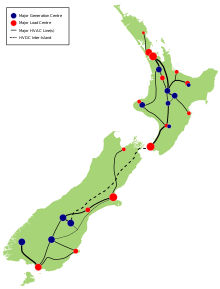_______________________________________
TITLE DEED
Electric Company
Price: $150
If a player owns ALL the Lots of any Color-Group, the rent is Doubled on Unimproved Lots in that group.
Some Electric Companies are owned by shareholders, some are privately owned, and some are owned by the council or the rate-payers.
________________________________________
TITLE DEED
The Oil Company
Price: $150
BLACK&DECKER (B&D)
The company is the world’s largest producer of power tools and accessories. Recently named as one of Australia’s key global brands and included in the 2004 Superbrands compendium, Black & Decker® this year celebrates 75 years of power and innovation in Australia.
Products:
Serial Drills (AC/DC)
_________________________________________
TITLE DEED
The Water Works
Price: $150
If a player owns ALL the Lots of any Color-Group, the rent is Doubled on Unimproved Lots in that group.
Water Works
The Water Works operates in much the same way as the Electric Company, but distributes water.
The water utility can be publicly owned or owned by shareholders and supplies water and reads meters.
Customers have to pay extra for any water they use in excess of their allocated amount.
_______________________________________________
The National Grid

The National Grid is the nationwide system of electric power transmission in New Zealand. The national electricity transmission grid is owned, operated, and maintained by state-owned enterprise Transpower New Zealand, although some lines are owned by local distribution companies and leased to Transpower. In total, the national grid contains 11,803 kilometres (7,334 mi) of high-voltage lines and 178 substations.
Much of New Zealand’s electricity generation is hydro-electric. The majority of this generation is from stations established on lakes and rivers in the lower half of the South Island, while most of the electricity demand is in the North Island, in particular, the Auckland region. Consequently, large amounts of electricity need to be transmitted long distances over the grid, between generation and load, including transmission across Cook Strait, between the two islands, via the HVDC link. [1]
Community Chest
FREE, Microsoft Windows 10
Operating System, worth $700 *
when you buy a Mozilla browser for £100*
*Conditions apply.
_______________________________________________
TITLE DEED
Internet Provider
Price $150
If a player owns ALL the Lots of any Color-Group, the rent is Doubled on Unimproved Lots in that group.
_________________________________________
TITLE DEED
Internet Provider
Customers are charged between $29.95 and $100 per month for internet service, and this will vary between companies.
Internet Gaming
Chance
YOU Receive Payout From Spark
$30 per month for all internet
_______________________________________________
TITLE DEED
Water Works
Price: $150
_______________________________________________
Formed as the London Electricity Board in 1948 as part of the nationalisation of the electricity industry by the Electricity Act 1947, it was privatised in 1990, as London Electricity plc.
The Company was acquired by Entergy, a US company in 1996 and then by EDF Energy in November 1998.[1]
A notable employee of the business is John Major, prime minister of the United Kingdom from 1990 to 1997. He joined them in 1963 and remained there until May 1965, when he moved to the Standard Chartered Bank to take up an executive role.
____________________________________________________
EDF Energy is an integrated energy company in the United Kingdom, with operations spanning electricity generation and the sale of gas and electricity to homes and businesses throughout the United Kingdom. It employs over 20,000 people and handles 5.7 million customer accounts.[1][2]
EDF Energy Customers (trading as EDF Energy) is wholly owned by the French state-owned EDF SA[3] and was formed in 2002 following the acquisition and mergers of SEEBOARD Plc (formerly the South Eastern Electricity Board), London Electricity Plc (formerly the London Electricity Board or LEB), SWEB Energy Plc (formerly the South Western Electricity Board) and two coal-fired power stations and a combined cycle gas turbine (CCGT) power station.
In 2009, EDF Energy took control of the UK nuclear generator, British Energy, buying share capital from the government. This made EDF Energy the UK's largest generator,[2] as well as the largest distribution network operator.
